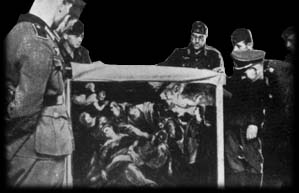
Occasionally such lists gave us important clues. There was one case in 1947 where a list which had played a part in some street corner deal contained an item which seemed to match with one of the stolen Linz paintings. It was soon found in the possession of a doctor who swore that he had inherited it from his parents. Actually, he had just acquired it from a piano maker, a rabid art collector, who in turn from received it from a dealer in musical instruments. This person confessed voluntarily, after some initial reluctance, that the piano maker had bought from him not one, but nine paintings which, he felt sure, were all looted ...
Not all chains were as long, nor was the outcome always so successful; there was no way of telling beforehand. It was not sufficient to recapture a painting, but in each instance the history of the case with all its ramifications had to be investigated. At times it took months before enough evidence was collected to break a case ...
Except in rare cases, we made it a rule not to prosecute the people in possession of stolen pictures. This policy was actually the basis of our success. An individual could count on our leniency, provided he voluntarily gave up his ill-gotten property and told us the whole truth. Only when a person was caught lying did we bring the case before a military court."
From the report by :Edward Breitenbach
Chief, Monuments and Fine Arts Section
Formerly MFA&A Officer
For Southern Bavaria
Bad Nauheim, 30 June, 1949.